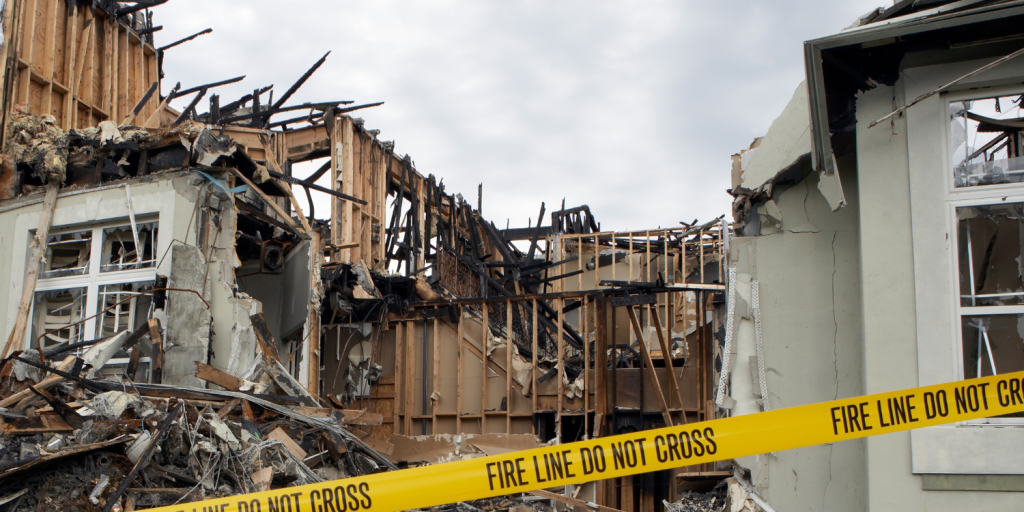How natural hazards and their catastrophic loss impact housing affordability and supply and demand

Advertisement: Click here to learn how to Generate Art From Text
The frequency, severity, and cost of catastrophic loss events are increasing. When large-scale catastrophic loss events result in housing unit loss, there’s an increase in demand for housing from displaced families within local and adjacent marketplaces.
The allocation of funds to rebuild, repair or replace housing units lost diverts market capacity from building new units. As a result, catastrophic housing losses have measurable impacts on the housing supply.
Determining natural hazards
A natural hazard is an extreme event that occurs naturally and causes harm to humans. It can include housing, infrastructure and amenities. In Canada, flooding is the cause of the most expensive losses in housing, but other natural hazards like wildfires, heat waves, hail, and drought are also on the rise.
In the future, it is expected that sea level rise, storm surges, melting permafrost, and seismic hazards will have a greater impact on catastrophic housing losses in Canada. Catastrophic loss is typically measured by insurable losses caused by natural hazards. These reported figures do not include societal costs, such as emergency response and management, and the knock-on effects on people and society.
Impact on people
Homeowners who are affected by catastrophic losses have the most at stake. In Canada, a large portion of the wealth of individuals is stored in their homes.
According to the CMHC, “High levels of debt do most damage when a significantly negative external economic event happens … It becomes difficult, if not impossible, for many mortgage holders to service their debt.”
In addition to property value impacts, the Red Cross estimates the cost of displacement for a typical family is $60,000 for the uninsured cost* in the form of savings or debt for disaster recovery and cost of living while displaced.
According to Treading Water**According to a pan-Canadian research study on the impact of flooding on property value, property values can be devalued due to catastrophic flood events. This results in the affected homeowners losing equity, and market growth. This reduces their ability to move wealth to less-risky locations.
The relative Buying powerThe number of people who are affected by natural disasters has been reduced substantially, reducing their capacity to financially recover or relocate.
In many cases, dealing with a catastrophic loss can cause increased stress, emotional pain, and, in some instances, PTSD. These costs are significant, but they are not included in the valuation of catastrophic losses.
Managing supply in the face of catastrophic losses
Three stages of catastrophic housing loss impact the supply: the point of incident, housing displaced persons and return.
Canadian events: point of incident, displaced and return
Glace Bay (N.S.)
The damage to 300 homes and the permanent relocation of 100 others will lead to a housing shortage for a long time.
Fort McMurray (Alberta)
2,400 buildings destroyed, 500 damaged. As of May 2018 (two years after the fire), 20% of homes were rebuilt.
Merritt, B.C.
400 homes destroyed; 52 homes permanently lost; 600 residents are unable to return home
Point of incident
The point of the incident is when a house becomes uninhabitable and requires repair or reconstruction. This loss will last until the point where the unit is returned, which may take two years, or longer in some cases. The impact on supply will be -1 unit. Not all units are rebuilt, as is often the case.
In Merritt in British Columbia, 13 per cent were not rebuilt due to a variety reasons, including the destruction caused by river flows. In Fort McMurray in Alberta, some homes were not rebuilt because of land toxicity. Cape Breton Island in Nova Scotia has retired some coastal lots to conservation land because the rising sea level and storm surge risks are too high to justify reinvestment.
Housing displaced people
Housing displaced persons is an important component of the response to catastrophic loss. When people flee from catastrophic losses, they increase housing demand. People will look for housing in their network, such as family and friends. Some will also find temporary housing while they wait for a more stable interim housing solution.
This +1 housing unit will exert pressure on housing in adjacent markets and large markets until the resident is back. And, it’s very likely to create pricing pressure as supply is strained against surging demand.
Return to the Homepage
The return period starts at the time the person is displaced and ends when they return. The return period has a -1 unit impact on housing supply as both materials and labor are used to rebuild damaged housing.
In most cases, the build-back allocation will take resources from the marketplace for new construction to prioritize rebuilding. This loss of market construction resources represents an irreversible time-value loss for new housing creation. The greater the magnitude of catastrophic losses in a market, the greater the impact on the creation of new housing units.
Low-cost investment to save homes from catastrophic loss is key to market stability and supply of housing
There’s an amplifying impact on the supply and demand gap from catastrophic losses which exacerbate pricing and availability pressures in local marketplaces. This impact lasts between the time of displacement and the time of return. This can be two years, or even longer.
The housing market and the people will continue to be affected by the impact of the supply-demand drag created by units that have suffered catastrophic losses in Canada’s housing supply. Direct property devaluation at the site after a catastrophic event can stigmatize local communities and have long-lasting real estate market impacts that affect everyone in the housing supply, from lenders to home owners.
With ambitious goals to create new housing, the lower-cost investment in resiliency to preserve housing from catastrophic loss is an important perspective for the achievement of Canada’s market stability and housing supply. The importance of residential resilience investment is illustrated by disruptions in new build capacity and the amplification of housing instability for Canadians that experience catastrophic loss.
*Red Cross 2015-2022 flood response analysis over seven years: CatIQ 2020
** Bakos K., Feltmate B., Chopik C., Evans C., 2022

‘ Credit:
Original content by realestatemagazine.ca – “How natural hazard and its catastrophic loss impact housing affordability, supply and demand”
Read the full article here https://realestatemagazine.ca/how-natural-hazard-and-its-catastrophic-loss-impact-housing-affordability-supply-and-demand/




